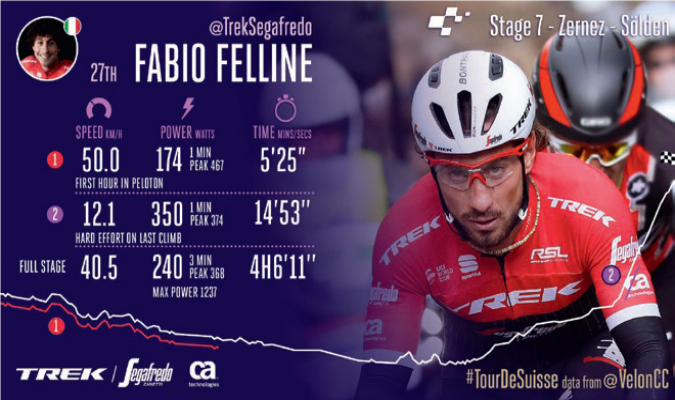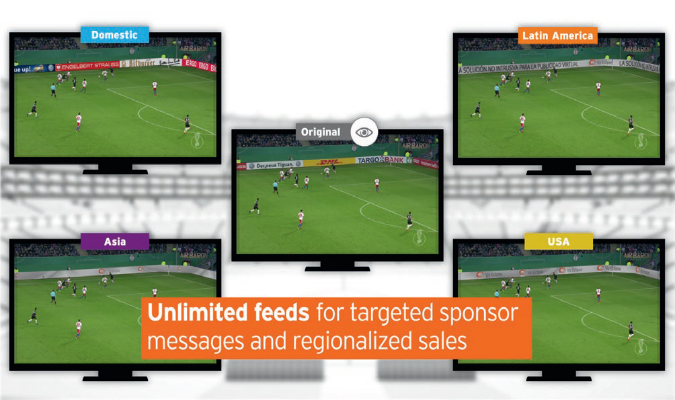Search the latest and greatest job opportunities in sport

Today's challenge is that sports fans want to connect with each other and with the sport, not brands. We have all become experts at tuning out the barrage of traditional advertising, because "being sold something" is annoying and intrusive. Our goal is to show both rights holders and sponsors how they can leverage digital solutions and new technologies, such as Machine Learning and Artificial Intelligence, to create valuable and relevant content offerings, alongside opportunities to connect and share – thus becoming part of the conversation and enhancing the fan experience, rather than intruding and alienating.
These days, digital technology is not only pervasive, but it is also expected in all aspects of life. As consumers, we are frustrated if there is no wifi available in stadiums or if there is no App, YouTube video or live streaming to follow our favorite sport. In fact, today the primary initial point of contact for reaching any audience – sports fan or otherwise – is via digital means.
Pretty much everyone agrees that building direct relationships with consumers is key; however the secret is to do so on the consumer's terms – meeting expectations and providing real value. We need to understand the things fans care about the most and consistently deliver those experiences to them. As a result, simple LED board exposure, VIP hospitality, tickets and onsite activations are insufficient for today’s brand marketeers; sponsors need to provide fans with customized offerings beyond the traditional channels.
One way to tackle this is by collaborating with new partners to create offerings that will better resonate with fans. A good example is Infront's partnership with Velon, a collective of pro cycling teams working toward engaging more fans into the world of cycling. Together we launched a new series of professional cycling races – the 3-day Hammer Series. In line with the ambitions of Velon to grow the fan base of cycling and bring fans closer to the action, Velon interactive live rider data was made available to fans through the Velon website, app and social channels. Velon’s on-bike cameras featured unmissable action footage for fans to get into the heart of the races as well as additional cameras to capture unique behind-the-scenes access to the series and the teams.

Velon data that has been captured during cycling races for a “closer and inside” experience for fans.
Consequently, fans benefitted from a much “closer and inside” experience of the competitions. To complement these more personal and engaging offerings, we always focus on integrating brands into content in a way that demonstrates how the sponsor's participation has helped enhance the fan experience. Likewise, the more relevant the content, the more it resonates. A consumer is much more interested in something he actually wants and is locally available. By using Machine Learning, content can be localised and customized to help brands deliver their messages to the right audience, in the right language, in the right market – with minimal extra effort.
For example, Infront and Vizrt's Viz Eclipse virtual overlay technology can replace advertising messages across LED perimeter boards on a football pitch, allowing TV audiences in various regions to all view different ads than those seen by the in-venue spectators. This allows a brand to insert targeted region-specific adverts into television feeds. Because the technology is self-learning, the overlay is seamless and improves over time, guaranteeing no intrusion on the viewing experience.

Viz Eclipse virtual overlay technology allowing TV audiences in various regions to all view different ads than those seen by the in-venue spectators.
Finally, Artificial Intelligence can help streamline data analysis and track user engagement to help sponsors better deliver relevant content. By mimicking the fans that are consuming that content, we can anticipate what type of content is needed, liked and consumed. Likewise, Chatbots allow brands to connect directly with their customers in a value-added way. Fans get personalised messages and experiences and direct access to the content they desire, which encourages them to share with others, further amplifying the sport and the brand message. By integrating brand messages into these more targeted offerings, sponsors can see higher conversion rates and better return on their investments, because their messaging is customized to the exact target demographic.
By utilising digital technology to not just reach sports fans, but to better understand their needs, we can create win-win situations – consumers are able to connect with the content they want and brands can connect to their consumers in new and valuable ways.
This article was originally published in the 2018 edition of the WFSGI Magazine which can be viewed here .
You can see our video interview with Claude Ruibal, Executive Director Digital, Production & Sport Solutions, Infront Sports & Media here .
Give your career a boost with the latest live vacancies in t he sports industry , or create an account today and stay up to date with all the latest industry knowledge, events and jobs in sport.
Search the latest and greatest job opportunities in sport
In the world of professional sports, sponsorship represents a significant source of revenue and plays a vital role for t...
Read moreThe sports industry is a vibrant and multifaceted industry, made up of a diverse range of sectors that shape its global ...
Read morePablo Romero, director of protocol at Sevilla FC and lecturer in the UCAM Master's Degree in Sports Management, shares t...
Read more